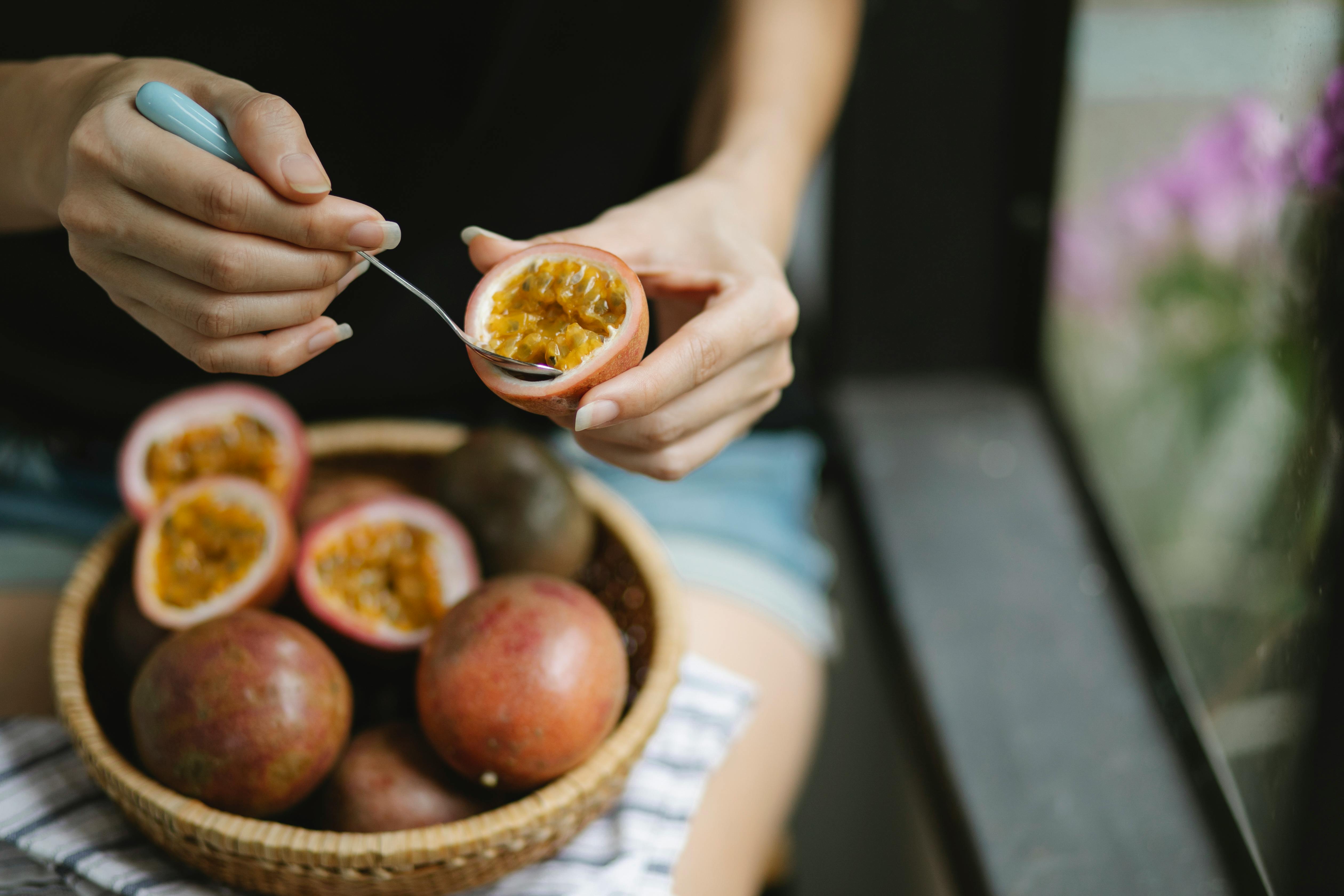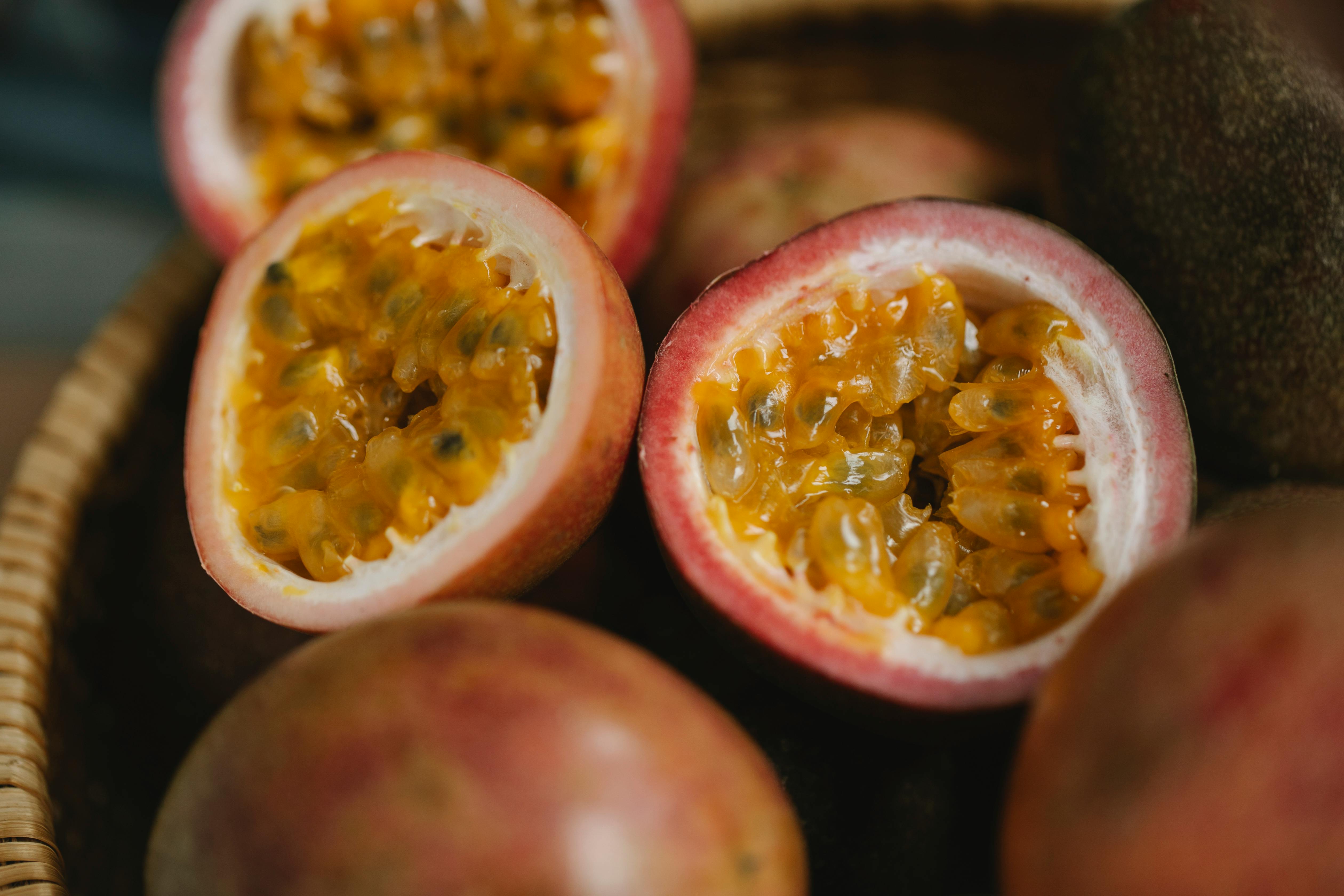Passion fruit is a delicious and nutritious tropical fruit that is enjoyed by many around the world. But how do you know when passion fruit is ripe and ready to enjoy? In this article, we will discuss what to look for when selecting and evaluating a passion fruit for ripeness so that you can enjoy this delightful treat at its peak flavor.To tell when a passion fruit is ripe, look for a fruit that has a wrinkled skin and is soft to the touch. The color of the fruit should be yellowish-orange in hue and there should be no dark spots or blemishes on the surface. When you squeeze the fruit gently, it should give slightly and feel juicy. Additionally, you may be able to smell a sweet, fragrant aroma coming from the passion fruit when it’s ripe. For best results, pick passion fruits from the vine when ready to eat as they don’t ripen further once picked.
Physical Signs of Ripe Passion Fruit
Ripe passion fruit can be easily identified by its physical characteristics. Most passion fruits are round or oval and have a thick, leathery skin. When ripe, the skin turns a deep yellow-orange color and becomes wrinkled. The wrinkles are important indicators of ripeness as they indicate that the fruit is softening and the sugars inside are starting to break down. A ripe passion fruit should also be slightly soft to the touch. When pressed gently with your finger, it should give a bit without feeling mushy or squishy. Additionally, you may notice little bumps on the surface of the skin which indicate that the fruit is fresh and ready to eat.
The aroma of a ripe passion fruit is also an important indicator of ripeness. The scent should be sweet and fragrant with hints of citrus and tropical notes. If you find that the scent is faint or weak, then it could mean that your passion fruit has been picked too early or has gone bad. It’s best to avoid fruits with an unpleasant odor as they may not taste good either. Finally, if you’re able to get your hands on a ripe passion fruit, it should feel heavy for its size as this indicates that it is full of juice inside.
How to Pick a Ripe Passion Fruit
Passion fruit is a juicy and flavorful tropical fruit. It can be eaten raw or used in a variety of dishes. To get the most out of your passion fruit, it is important to pick ripe ones. Here are some tips for selecting the perfect passion fruit.
Look for fruits that are dark purple in color. Passion fruit that have a yellow or green hue may not be ripe yet. The darker the color, the riper it will be. You should also look for fruits that have a wrinkled skin. This indicates that the fruit is mature and ready to eat.
Next, give it a gentle squeeze to assess its ripeness. If it feels slightly soft, then it is ripe and ready to eat. If it feels hard, then you should wait a few days before enjoying it. Lastly, smell the passion fruit to see if you can detect an aroma of sweetness and tartness; this is another sign of ripeness.
Picking ripe passion fruits can be tricky but with these tips, you will be able to choose the best ones every time! Enjoy your delicious tropical treat!
Best Conditions for Growing Passion Fruit
Passion fruit is a tropical plant that requires warm and humid conditions to thrive. It needs an average temperature of at least 18°C (64°F) for optimal growth. In cooler climates, the plant must be protected from frost. Passion fruit also requires plenty of sunlight and well-draining soil with a pH between 5.5 and 6.5. The soil should also be rich in organic matter, such as compost or manure, to ensure adequate nutrient availability. Additionally, passion fruit needs plenty of water, especially during the flowering and fruiting stages of growth. Mulching around the base of the plant can help retain moisture in the soil and control weeds. Lastly, passion fruit plants benefit from regular pruning to promote air circulation and encourage new growth.
Overall, passion fruit requires warm temperatures, plenty of sunlight, well-draining soil with adequate organic matter content, abundant water during flowering and fruiting periods, mulching to retain moisture in the soil, and regular pruning for air circulation. With these conditions met, passion fruit plants have the potential to produce a bountiful harvest!
Different Types of Passion Fruit
Passion fruit is a tropical fruit that is native to South America and is now grown in many parts of the world. There are many different types of passion fruit, each with its own unique flavor and texture. The most common types are the purple passion fruit, yellow passion fruit, and giant granadilla.
The purple passion fruit, also known as the purple granadilla, has a thick, purple-brown skin and a juicy interior filled with small black seeds. The flesh of this variety is tart yet sweet and can be used in a variety of dishes such as smoothies, jams, pies, salads, sorbets, and sauces. It also makes an excellent juice or syrup for cocktails.
The yellow passion fruit is similar to the purple variety in size and shape but has a bright yellow color. It has a slightly sweeter flavor than the purple variety but still contains small black seeds. This type is often used to make juices or can be eaten on its own as a snack.
The giant granadilla is larger than the other two varieties and has an orange-yellow color when ripe. It has an intense sweet flavor with no tartness or bitterness. This type is typically eaten fresh in salads or desserts or can be made into juices or jams.
No matter which type you choose, passion fruit can be used in many ways to add sweetness and flavor to your favorite dishes. Enjoy!

The Benefits of Eating Ripe Passion Fruit
Passion fruit is a nutritious fruit that is packed with many essential vitamins and minerals. It has a sweet and tart flavor that can be enjoyed in many different ways. Eating ripe passion fruit provides several health benefits, including improved digestion, better skin health, and increased energy levels. Here are some of the benefits of eating ripe passion fruit.
Improved Digestion
Passion fruit contains dietary fiber, which helps to improve digestion by promoting regular bowel movements and easing constipation. The dietary fiber also helps to regulate blood sugar levels, making it beneficial for those who suffer from diabetes or pre-diabetes. The high levels of Vitamin C in passion fruit can also help reduce inflammation in the digestive system and improve overall gut health.
Better Skin Health
Passion fruit is rich in Vitamin A, which helps to protect and nourish the skin from the inside out. Vitamin A can promote collagen production, which helps to reduce wrinkles and fine lines while increasing skin elasticity. Vitamin A can also help protect against sun damage, making it a great addition to any skincare routine.
Increased Energy Levels
Passion fruit is an excellent source of natural energy due to its high content of B vitamins. B vitamins are essential for converting food into energy, so eating passion fruit can help keep your energy levels up throughout the day. It’s also a good source of iron, which is needed for red blood cell production and oxygen delivery throughout the body.
How Long Does It Take for a Passion Fruit to Ripen?
Passion fruit is an exotic and delicious fruit that can be enjoyed in many ways. The length of time it takes for a passion fruit to ripen varies depending on its variety and the growing conditions. Generally, passion fruits take anywhere from four to 12 weeks to ripen, depending on how warm or cool the climate is. In warmer climates, the ripening process can be significantly faster than in cooler climates.
In order to determine when a passion fruit will be ripe, it’s important to understand the stages of its development. When the flower first blooms, the tiny green fruits begin to develop and grow as they are pollinated by bees. As they begin to mature, the fruits will slowly turn yellow or purple in color, depending on their variety. After they turn yellow or purple, they will slowly get softer until they are fully ripe.
The best way to tell if a passion fruit is ripe is by gently squeezing it with your fingers. If it feels soft and slightly squishy, then it should be ready for harvesting and eating! If it still feels hard and firm, then you should leave it on the vine for a few more weeks until it’s ready for harvesting.
It’s also important to note that even when a passion fruit is fully ripe, it may still have some green spots on its skin due to its variety or climate conditions during its maturation process. These spots should not affect the flavor of the fruit at all and can be eaten without any issues!
Overall, passion fruits take anywhere from four to 12 weeks to ripen depending on their variety and climate conditions. It’s important to check them regularly so that you can harvest them at their peak ripeness and enjoy all of their delicious flavor!
Storing Unripe Passion Fruits
Unripe passion fruits can stay fresh for up to two weeks with proper storage. To keep them in good condition, store unripe passion fruits at room temperature and away from direct sunlight. It is best to store the fruits in a cool, dry place out of direct sunlight, such as a cupboard or shelf. If possible, wrap each fruit individually in newspaper or tissue paper to help protect it from bruising. Once they have ripened, transfer the passion fruits into a sealed container and refrigerate immediately.
Storing Ripe Passion Fruits
Ripe passion fruits can be stored in the refrigerator for up to five days. To ensure that they stay fresh as long as possible, wrap them individually in newspaper or tissue paper before placing them in an airtight container and putting them into the refrigerator. Make sure that any containers used are properly sealed so that no air can get into the container and spoil the fruit. If you plan on using your ripe passion fruits within two days of purchase, you can leave them at room temperature instead of storing them in the refrigerator.

Conclusion
Ripe passion fruit is a delicious and nutritious snack that can be enjoyed in many ways. Knowing when the fruit is at its peak of ripeness is key to getting the most out of it. To identify a ripe passion fruit, look for a wrinkly skin, dark coloring, fragrant aroma, and light weight. If you press your thumb against the skin and it yields to your touch, then the fruit is ripe and ready to eat.
By learning the signs of ripeness for passion fruits, you can ensure that you always have access to their unique flavor and nutrition. So keep an eye out for these signs when shopping for your next batch of passion fruit!


